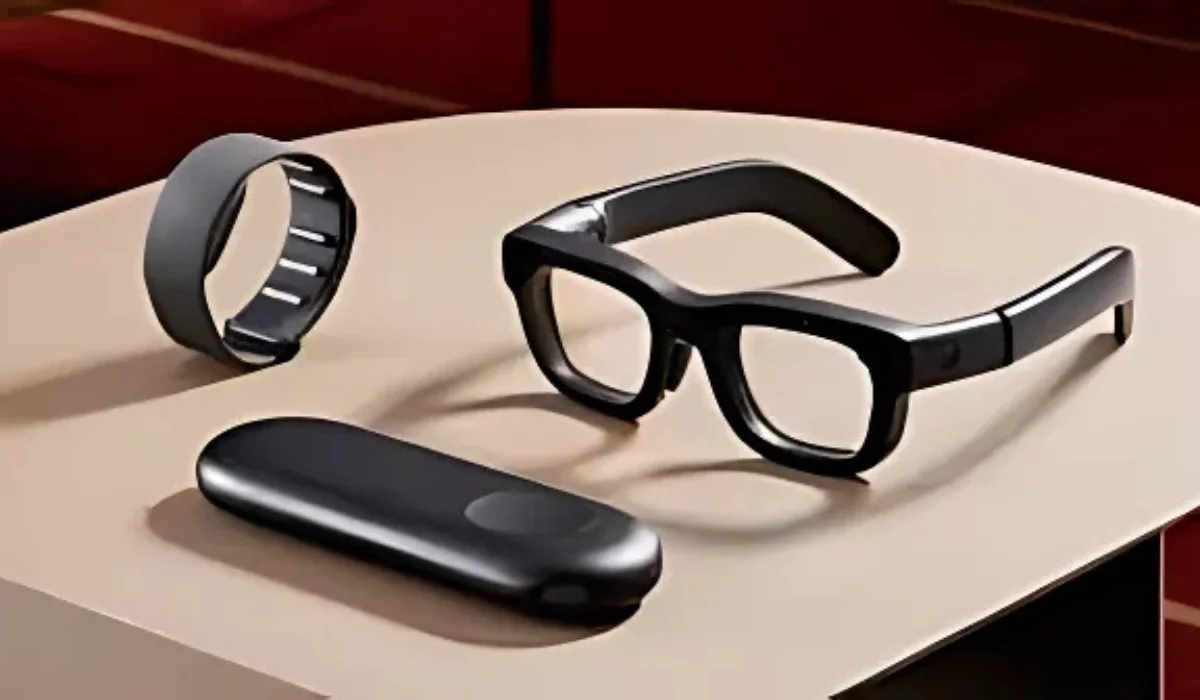Meta’s Augmented Reality Glasses: A Step Towards the Future of Time Travel and Digital Integration

With the rapid advancement of technology, augmented reality (AR) glasses are bringing about unprecedented changes across various fields. Among these changes are innovations that seamlessly blend the physical and digital worlds.
In this context, Meta (formerly Facebook) has launched a new model of augmented reality glasses, representing a significant leap toward realizing humanity’s dream of time travel and transcending the boundaries of the physical world. While time travel remains a concept in science fiction, this innovation from Meta represents one of the most profound technological advancements that gets closer to this idea.

Augmented Reality Glasses: Steps Toward the Future
The new AR glasses revealed by Meta are not just a technological gadget; they serve as a gateway to endless possibilities for interacting with the digital world. These glasses use a combination of augmented reality, artificial intelligence (AI), and advanced sensing technologies to integrate digital information with the real world in real time.
The Metaverse and Our New Reality
Before discussing the AR glasses, it is essential to understand how the metaverse contributes to a new form of digital existence. The metaverse is a virtual environment that merges the physical and digital worlds in an interconnected manner. When we talk about time travel in this context, it’s not about physical movement as portrayed in literature and cinema, but rather about transitioning to different times or places within immersive digital environments.
Meta aims to integrate this concept with today’s reality using cutting-edge technologies that allow users to transition into new and diverse experiences. Meta’s new AR glasses are designed to enable individuals to interact with virtual worlds in unprecedented ways, taking a step into the future with every interaction.
Design and Technology
Meta’s new glasses are designed to be lightweight and stylish, prioritizing user comfort. They feature advanced display screens that provide users with additional information without obstructing their view of the surrounding environment. This allows users to benefit from the information in various settings without disconnecting from the real world.
Technologically, the glasses incorporate the latest sensing techniques, including high-precision cameras and advanced optical sensors, to track the user’s movements and interact with surrounding elements. They also include a powerful processing chip that allows the device to load and render immersive experiences quickly, offering a seamless interaction in real-time.
Augmented Reality and “Time Travel”
Time travel, as depicted in literature and film, involves traveling to past or future periods. However, with Meta’s AR glasses, users can travel through time by experiencing virtual environments that represent different periods in history or the future. Imagine using these glasses to personally experience historical events or glimpse the future in speculative digital settings based on scientific data.
By leveraging technologies such as AI and mixed reality, users can visit past environments, explore them, and interact with them. For instance, they might experience historical events as if they were part of them. In the future, this technology may allow users to explore future possibilities in areas such as futuristic cities, diverse virtual worlds, and even predictive models based on big data and smart analytics.
Suggested Read: Amazon Revolutionizes Delivery with Smart Glasses Technology
The Multifaceted Applications of AR Glasses
Meta’s new AR glasses hold immense potential in a variety of fields, including education, entertainment, healthcare, and work. Here are some exciting uses of this device:
Education and Training
In education, students can use AR glasses to experience historical events firsthand and interact with immersive environments that enhance their understanding of these events. For example, instead of just reading about the ancient Egyptians in textbooks, students can “visit” ancient Egypt in a digital environment.
Design and Engineering
In the world of design and engineering, these glasses offer a powerful tool for simulation and modeling. Engineers and architects can visualize designs realistically on the ground or within virtual environments, facilitating decision-making and saving time and resources.
Healthcare
In healthcare, doctors and medical practitioners can experience new diagnostic and treatment techniques using these glasses. For example, doctors can display 3D medical images or simulate complex medical procedures before performing them on patients.
Entertainment and Leisure
There’s no doubt that the entertainment sector stands to benefit greatly from this technology. AR-based games provide limitless experiences, where users can enter virtual worlds that blend fantasy and reality in exciting ways.
Challenges and Opportunities
Despite the incredible potential of Meta’s AR glasses, there are several challenges that must be addressed. Technical issues related to battery life, data processing speed, and interactions between the real and virtual worlds remain hot topics in AR research. Additionally, there are concerns regarding privacy, as the cameras and sensors in the glasses could raise questions about how user data is handled and protected.
Meta’s AR Glasses: A Time Machine in Disguise
Ultimately, we can think of these glasses as a time machine. Instead of taking you to the past or the future in a traditional sense, they allow you to explore these periods interactively. This opens up new doors to mysterious worlds that can be accessed without leaving your current location. Meta’s “time machine” is not confined to science fiction but is becoming a tangible reality that provides users with the ability to access different worlds through a small screen on their face.
By bridging the gap between physical reality and the immersive digital world, Meta’s augmented reality glasses pave the way for a future where time travel is not a concept of the past, but a powerful tool for exploring and experiencing history, the future, and everything in between.


Comments